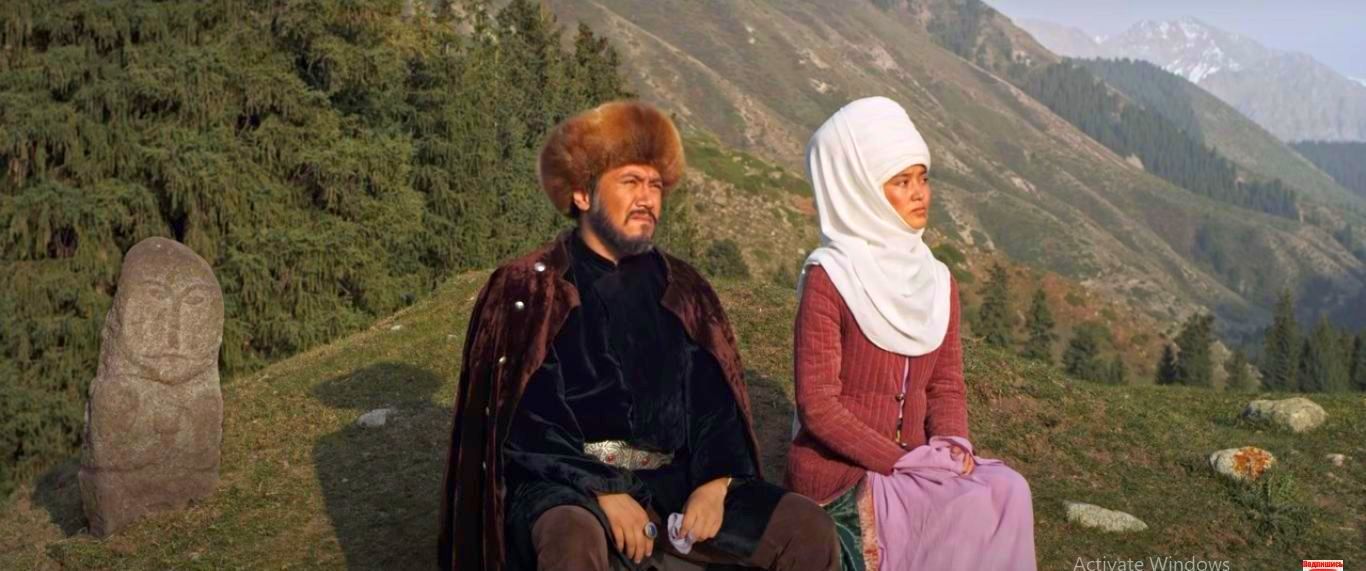



This is a map of the five Central Asian countries: Kazakhstan, Uzbekistan, Turkmenistan, Tajikistan and Kyrgyzstan and their Caucasus neighbours on the other side of the Caspian Sea: Azerbaijan, Georgia and Armenia.
Their unique cultures were stifled under the armour of the all-encompassing Soviet Union. After the collapse of the empire, in 1991, once they gained their independence and started to breathe freely, their historical, cultural, artistic and social values came to the fore. Chess was not exempted. Being part and parcel of the lives of the nomads of the steppes since time immemorial, today chess takes the shape of a constructive element of the sport and cultural development of these countries. They rightly bank on chess as a promotional tool.
Ever since I was a child, I was curious about these exotic shores. Recently my interest was awoken thanks to the exciting young chess forces that are taking the world by storm. When unable to physically visit faraway lands, in order to satisfy my curiosity, I reach for my favourite alternative: cinema. My other infatuation, world music, is also a way to help me sense their beats, which hide delightful, powerful melodies and danse movements.
It is amazing how even small countries produce beautiful films, opposite the Hollywood ubiquitous cinema invasion. Fiercely proud of their history and identity, each one of these countries has produced wonderful films that, luckily, are available with English subtitles. I will let anyone to their own fancy and search for themselves, but here I will single out an outstanding piece: Kurmanjan Datka, Queen Of The Mountains (YouTube link) released in 2014 and directed by Sadyk Sher-Niyaz.
It was Kyrgyzstan’s foreign-language Oscar submission. An epic drama, set high on the steppes of Central Asia, it depicts Kurmanjan Datka, the stateswoman who helped unite Kyrgyzstan, a nation of 40 tribes, in the 1800s. Today she is remembered as Queen of the Alai and is revered as ‘ulut enesi’: mother of the nation.

Kurmanjan Datka, Queen Of The Mountains | Photo: Aitsyh Film
From these films, we learn about the deep-rooted traditions, the conditions and status of women in the highly traditional but changing societies, and the influence and rule by the communist regime and the Soviet Union.
They are not only cinematographically interesting, but they also reveal, in a beautiful, natural manner, plenty of the history, customs, music, the peoples’ characters and ways of life, the wisdoms and weaknesses, all coupled with a breathtaking scenery.

Kurmanjan Datka and her husband | A screenshot from the film
Kurmanjan Datka’s ancestry has not produced yet a notable chess representative in comparison to their neighbours. However, during this Year of the Woman in Chess, five Kyrgyz women received prizes for their achievements: Baktygul Tilenbaeva (outstanding chess trainer), Roza Vendrova (outstanding chess educator), Shakhnazi Musayeva (outstanding photographer), Dariya Kudainazarova (woman chess player with disability for outstanding fighting spirit) and Medina Zhumashova (outstanding chess administrator).
And it looks like their gaining relevance in competitive chess is on its way thanks to their youth: at this year’s Asian Chess Championships among schoolchildren held in Sri Lanka, on December 2-11, Kyrgyz players won 41 medals!
In classical chess, they brought home six individual and six team medals. They won 17 medals in rapid chess and 12 medals in blitz. When they landed back home in the early morning hours, they were received and congratulated by the president of their country’s Olympic Sports Committee, Tokombaev Raiymbek Zamirbekovich.

The pride of their country — young Kyrgyz winners with their cups and flag | Photo: Kyrgyz Chess Union

Aizhan Syezdbekova (12 y.o.) and Eldiyar Orozbaev (16) | Photo: Kyrgyz Chess Union
As internet searches move in mysterious ways, a legend connected to the Kyrgyz land led me to an unlikely historic chess personality: Timur The Great, the ruler of the Timurid Empire, better known as Tamerlane. An avid chess player, it is believed that he has invented a chess variant popular in his times, called Tamerlane Chess.
The legend speaks about an ancient mound of stones called San Tash (Counting Stones), 4 m high, 56 m diameter, found in the Issyk-Kul region in Eastern Kyrgyzstan:
On his way to war against the Chinese, an old man stopped Tamerlane and asked him to order his soldiers to each collect a stone from the shores of Issyk-Kul Lake and to lay them in a pile in the centre of the valley they were passing through. On his return from the campaign the old man was waiting for him again and this time he asked Tamerlane to order his soldiers to collect a stone each as they went past the pile. When all had done so Tamerlane could see how many men he had lost in battle.

San Tash, Tamerlane's Counting Stones | Photo: Trip to Kyrgyzstan
Tamerlane left an important chess legacy to the Timurid Empire.

Map of the Timurid Empire
| Advertising |